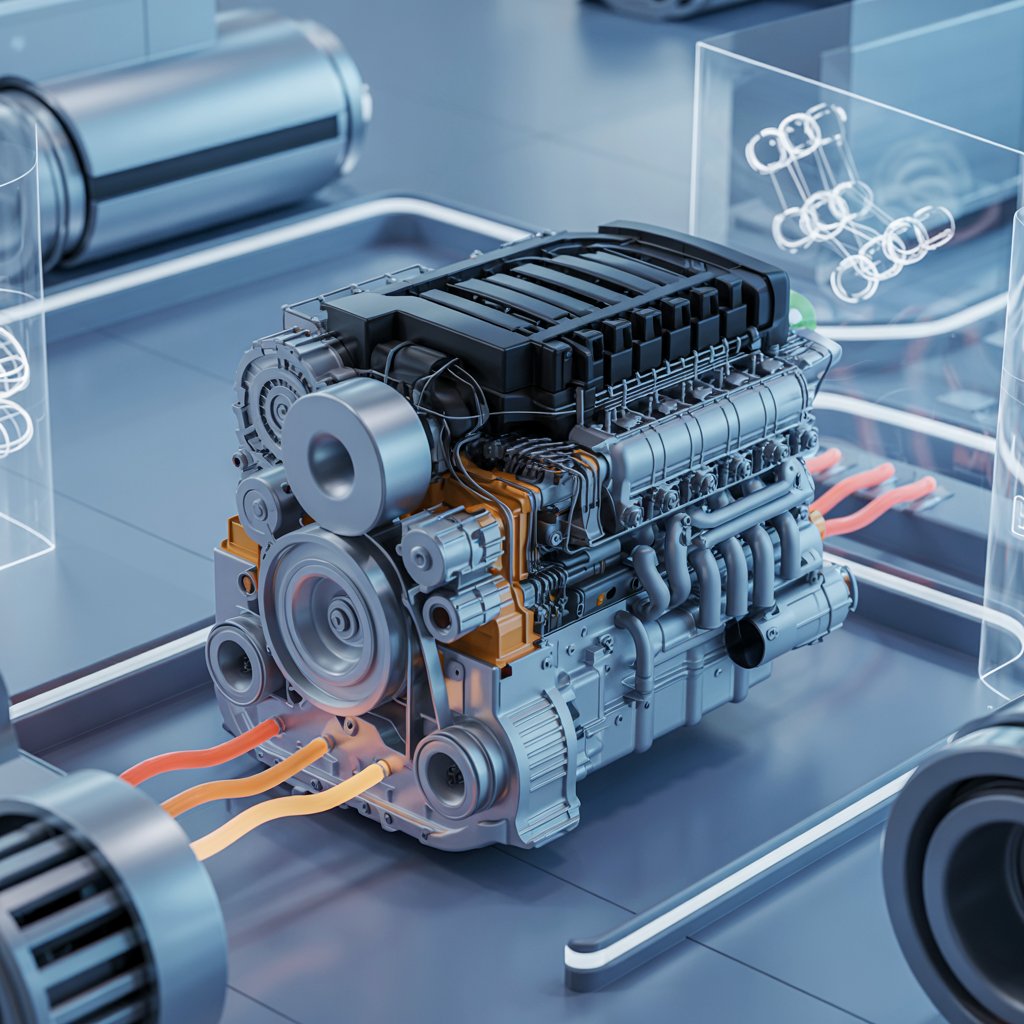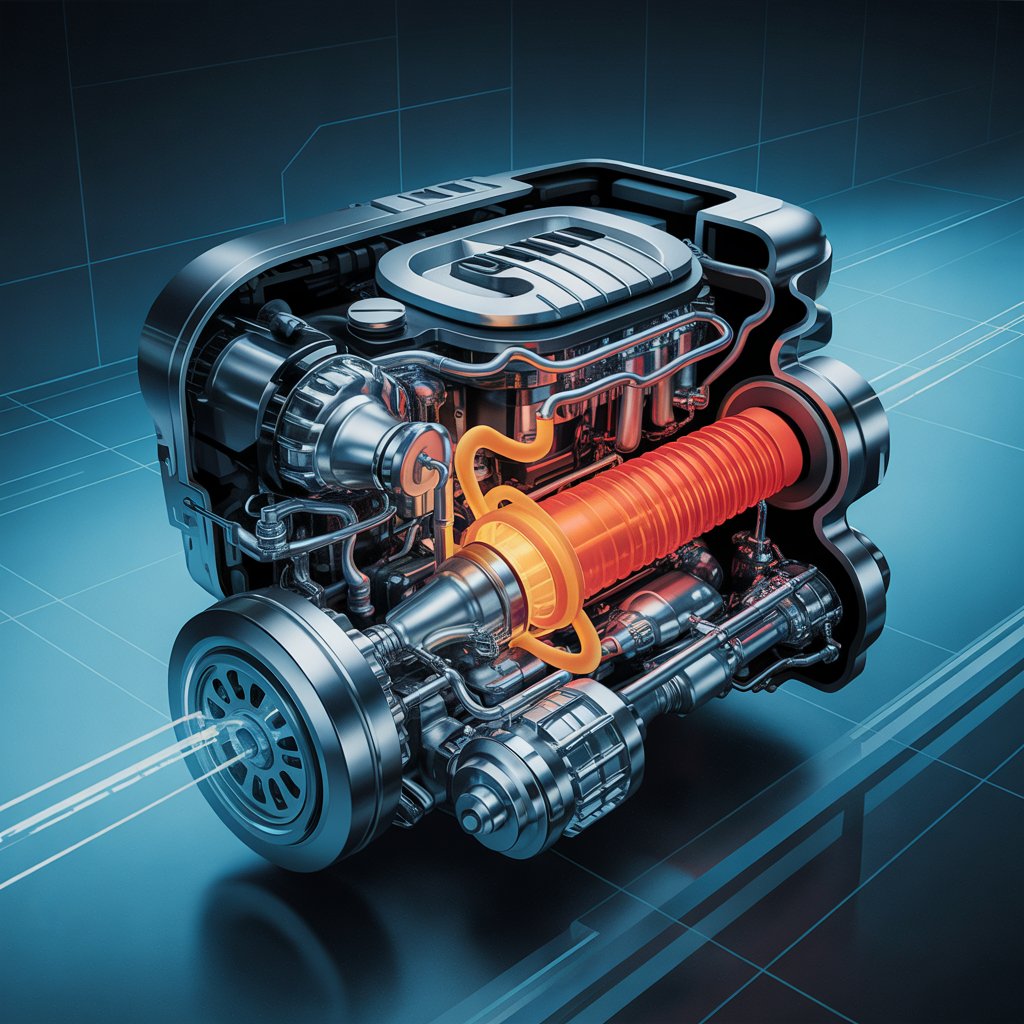
Explore how high-temperature resistant rubber for engines extends seal life and cuts maintenance, boosting engine performance.
Learn actionable strategies, real-life examples, and expert insights tailored for procurement managers and supply chain heads in the automotive industry. Find out more now!
Automotive engines operate under some of the most demanding conditions in the industrial world. With constant exposure to high temperatures, vibrations, and harsh chemicals, the durability of rubber components is paramount. In this in-depth guide, we explore how high-temperature resistant rubber for engines—and specifically, high-temperature resistant rubber seals for engines—can drastically improve engine performance, reduce maintenance costs, and enhance overall reliability.
Introduction
In today’s competitive automotive industry, procurement managers and supply chain heads face mounting pressure to ensure that every component meets rigorous standards of quality and durability. Rapid wear and fatigue in rubber components can lead to increased downtime, higher replacement costs, and even safety issues. High-temperature resistant rubber offers a solution, providing enhanced resilience and longevity even under extreme operating conditions.
In this post, we will:
- Define rapid wear and fatigue in the context of automotive rubber components.
- Explore the material science behind high-temperature resistant rubber.
- Present actionable insights and strategies to overcome these challenges.
- Offer real-life examples and case studies to illustrate best practices.
- Answer frequently asked questions to guide you in making informed procurement decisions.
By the end of this guide, you’ll have a comprehensive understanding of how investing in high-quality, high-temperature resistant rubber can significantly impact your supply chain’s efficiency and reliability.
Understanding Rapid Wear & Fatigue in Automotive Rubber Components
What is Rapid Wear & Fatigue?
Rapid wear and fatigue refer to the deterioration of rubber components under repeated mechanical stress and thermal cycles. Over time, these factors can lead to:
- Cracking and hardening of rubber.
- Loss of elasticity that impairs the sealing performance.
- Increased susceptibility to failure under operational loads.
Key Contributing Factors:
- Thermal Stress: Engine components are routinely exposed to extreme temperatures that can accelerate material degradation.
- Cyclic Loading: Continuous vibrations and pressure variations lead to micro-cracks that grow over time.
- Chemical Exposure: Contact with oils, fuels, and other chemicals can erode rubber compounds.
Takeaway: Understanding the underlying causes of rapid wear is the first step toward selecting the right materials that withstand these challenges.
Impact on Engine Performance & Maintenance
When rubber components fail prematurely, the consequences can be severe:
- Increased Maintenance Costs: Frequent repairs and replacements add to operational expenses.
- Downtime: Unscheduled maintenance can lead to prolonged engine downtime, impacting overall production.
- Safety Risks: Worn-out seals may lead to leaks or system failures that jeopardize safety.
Example: A major automotive manufacturer reported that switching to high-temperature resistant rubber seals reduced maintenance frequency by 30%, leading to significant cost savings over a production cycle.
The Role of High-Temperature Resistant Rubber in Engine Durability
Material Science Behind Durable Rubber
The evolution of elastomers has led to the development of specialized rubber compounds designed to withstand extreme conditions. High-temperature resistant rubber is formulated with advanced additives and curing processes that enhance its molecular structure.
Key Innovations:
- Enhanced Polymer Chains: Modern formulations feature cross-linked polymer chains that resist degradation at high temperatures.
- Additive Technology: The incorporation of heat stabilizers and antioxidants helps mitigate the effects of thermal stress.
- Improved Curing Processes: Precision curing techniques ensure a uniform structure, reducing the likelihood of micro-cracks.
Table 1: Comparison of Traditional vs. High-Temperature Resistant Rubber
| Feature | Traditional Rubber | High-Temperature Resistant Rubber |
| Heat Resistance | Moderate | High |
| Durability Under Cyclic Load | Low | High |
| Chemical Resistance | Variable | Consistent |
| Maintenance Frequency | High | Low |
| Lifecycle Cost | Higher | Lower |

Takeaway: The advanced material science behind high-temperature resistant rubber not only prolongs component life but also translates into significant cost savings in the long run.
How High-Temperature Resistant Rubber Seals for Engines Work
These specialized seals are engineered to maintain their integrity even when exposed to extreme engine conditions:
- Molecular Stability: They maintain flexibility and resilience due to a highly stable molecular structure.
- Sealing Efficiency: Even under rapid thermal cycling, these seals adapt to minor deformations without losing their effectiveness.
- Real-World Performance: Field studies and laboratory tests consistently show that high-temperature resistant seals outperform traditional options in durability and reliability.
Takeaway: Investing in these advanced rubber seals is a strategic move to enhance overall engine reliability and reduce maintenance interruptions.
Innovative Solutions to Overcome Rapid Wear & Fatigue
Advanced Manufacturing Techniques
Modern manufacturing processes have transformed how rubber components are produced, ensuring consistency and quality.
Key Techniques:
- Precision Extrusion: Allows for the creation of uniformly consistent seals that perform reliably under stress.
- Automated Quality Control: Integration of AI and IoT in production lines ensures real-time defect detection and immediate quality assurance.
- Predictive Analytics: Data-driven insights help forecast potential failures, allowing for proactive maintenance.
- IoT Integration: Sensors and monitoring systems provide continuous feedback on component performance.
- AI-Driven Inspections: Automated systems identify anomalies during production, ensuring only top-quality products reach the market.
- Case Study: A supplier utilizing these techniques reported a 25% improvement in product lifespan, reducing overall maintenance costs.
Preventative Maintenance & Quality Assurance Strategies
Effective maintenance strategies are essential to extend the lifespan of rubber components:
- Regular Inspections: Scheduled checks can detect early signs of wear before they become critical.
- Data-Driven Maintenance: Leveraging maintenance logs and performance data helps optimize replacement schedules.
- Supplier Certifications: Working with certified suppliers (e.g., IATF 16949) ensures adherence to high quality standards.
- Standardized Procedures: Implement uniform maintenance protocols across all operations.
- Feedback Loops: Regular reviews with suppliers can drive continuous improvement.
- Visual Inspections: Use of high-resolution imaging to detect micro-cracks early.
Takeaway: Proactive maintenance coupled with advanced manufacturing not only minimizes downtime but also reinforces the long-term reliability of high-temperature resistant rubber components.
Best Practices for Procurement Managers & Supply Chain Heads
Evaluating Supplier Certifications & Product Quality
For procurement managers, the selection of suppliers is critical to ensuring long-term product reliability.
Key Evaluation Criteria:
- Certifications: Verify if the supplier meets industry standards such as IATF 16949.
- Quality Consistency: Look for consistent performance in third-party quality audits.
- Customer References: Request case studies or testimonials from similar projects.
- Third-Party Audits: Ensure suppliers have undergone independent quality assessments.
- Performance Benchmarks: Compare product performance metrics across different suppliers.
- Risk Mitigation: Prioritize suppliers with robust contingency plans for quality issues.
Integrating Advanced Rubber Solutions into Procurement Strategies
Align your procurement process with innovations in rubber technology to secure long-term benefits.
Actionable Steps:
- Trial Programs: Initiate pilot projects to test high-temperature resistant rubber components before full-scale adoption.
- ROI Analysis: Evaluate the total cost of ownership by factoring in reduced maintenance and extended component life.
- Vendor Relationships: Build strong, collaborative relationships with suppliers to foster innovation and continuous improvement.
- Implementation Roadmap: Develop a phased approach to integrate new materials.
- Performance Metrics: Establish clear KPIs to monitor the success of new products.
- Collaborative Innovation: Engage suppliers in joint R&D efforts to tailor solutions to specific operational needs.
Takeaway: A proactive and strategic procurement approach can unlock significant advantages in cost efficiency and product reliability.
Frequently Asked Questions (FAQs)
What type of rubber is best for high-temperature engine seals?
High-temperature resistant rubber is specifically engineered to endure extreme thermal cycles, offering superior durability and reliability compared to traditional elastomers. These materials are enhanced with advanced additives and improved curing processes, ensuring they maintain their sealing properties even under continuous stress.
How do high-temperature rubber seals perform under extreme engine conditions?
These seals are designed to:
- Withstand Thermal Stress: Their enhanced molecular stability allows them to perform consistently even at high temperatures.
- Resist Chemical Degradation: They maintain integrity despite exposure to harsh engine fluids.
- Adapt to Cyclic Loading: Their flexible yet resilient structure minimizes the risk of fatigue and wear.
For further technical insights, you can refer to detailed industry reports from [SAE International](https://www.sae.org) and [ISO](https://www.iso.org).
What maintenance practices enhance the lifespan of high-temperature rubber components?
To maximize the lifespan of these components, it is crucial to:
- Implement Routine Inspections: Early detection of wear can prevent catastrophic failures.
- Adopt Data-Driven Strategies: Use predictive analytics and IoT sensors to monitor performance in real time.
- Partner with Certified Suppliers: Work with suppliers who meet recognized industry standards to ensure consistent quality.
Can high-temperature resistant rubber handle rapid thermal cycling effectively?
Yes. Thanks to advanced formulations and manufacturing techniques, these materials are designed to absorb and adapt to rapid changes in temperature without significant degradation, thereby ensuring continuous, reliable performance.
Key Takeaways:
- Understanding the Challenge: Rapid wear and fatigue are major issues that compromise engine performance and increase maintenance costs.
- Innovative Materials: High-temperature resistant rubber, bolstered by advanced material science and manufacturing processes, offers a robust solution.
- Proactive Strategies: By incorporating preventative maintenance, data-driven insights, and rigorous supplier evaluations, procurement managers can secure a more reliable supply chain.
- Actionable Insights: This guide provides a roadmap for integrating advanced rubber solutions into your procurement strategy, ensuring long-term durability and cost efficiency.
If you’re ready to revolutionize your supply chain and minimize maintenance costs, download our brochure or contact Saga Elastomer Pvt Ltd for a personalized consultation.
Embrace innovation today and safeguard your operations against the challenges of rapid wear and fatigue.
Additional Resources:
– [SAE International](https://www.sae.org) – for the latest research on automotive materials.
– [ISO Standards](https://www.iso.org) – to understand industry compliance requirements.
– [Case Studies on Rubber Durability]() – real-life examples of companies benefiting from advanced rubber technologies.
By leveraging these insights and best practices, you can make informed decisions that enhance your supply chain, optimize engine performance, and ultimately drive significant cost savings. Investing in high-temperature resistant rubber for engines is not just about staying ahead—it’s about redefining quality and durability for the future of automotive manufacturing.
